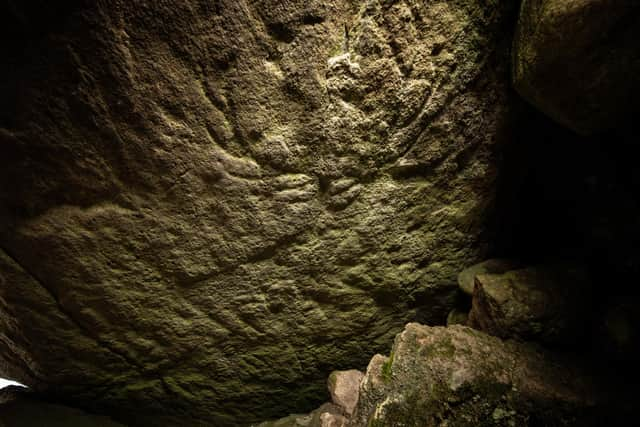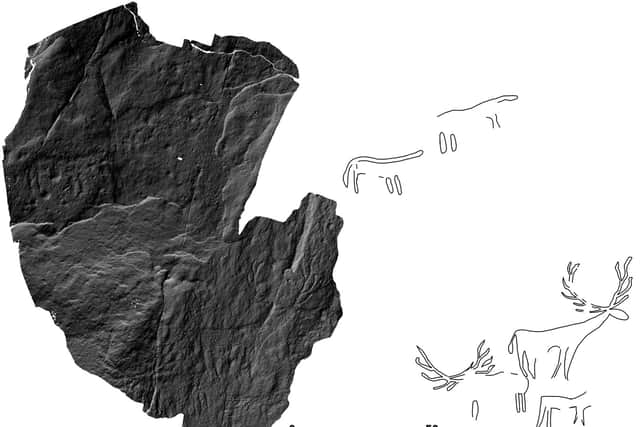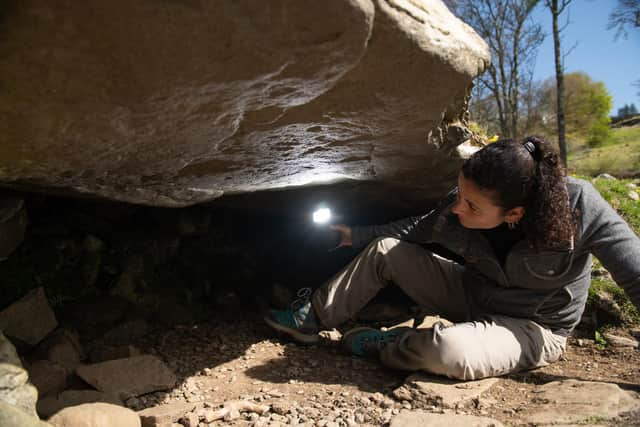Prehistoric animal carvings discovered for first time in Scotland
The prehistoric drawings were discovered inside Dunchraigaig Cairn in Kilmartin Glen, Argyll.
They are the first clear examples of deer carvings from the Neolithic to Early Bronze Age in the whole of the UK.


Advertisement
Hide AdAdvertisement
Hide AdThey depict two male red deer, which are considered to have been the largest deer species in the country at the time.
Full-grown antlers can be seen on both animals, and one of the deer can be seen with a short tail.
Three other quadrupeds are also visible, two of which are thought to be juvenile deer – useful to prehistoric communities as a source of food and with bones providing a resource for making tools.
The drawings were found by Hamish Fenton, who has a background in archeology, and it was the first time ancient animal carvings have been discovered in an area alongside cup and ring markings in the UK.


Mr Fenton said: "I was passing Dunchraigaig Cairn at dusk when I noticed the burial chamber in the side of the cairn and decided to slide inside with my torch.
"As I shone the torch around, I noticed a pattern on the underside of the roof slab, which didn't appear to be natural markings in the rock.
"As I shone the light around further, I could see that I was looking at a deer stag upside down, and as I continued looking around, more animals appeared on the rock.
"This was a completely amazing and unexpected find and, to me, discoveries like this are the real treasure of archaeology, helping to reshape our understanding of the past."


Advertisement
Hide AdAdvertisement
Hide AdThere are more than 3,000 prehistoric carved rocks in Scotland with the vast majority of cup and ring markings which are created by striking the rock surface with a stone tool, such as a large river-washed pebble.
Many of these mysterious carvings can still be seen in the open landscape, yet there is still little known about how they were used, or what purpose they served.
Experts from Scotland's Rock Art Project examined the carvings to confirm their authenticity by using innovative technology in their analysis.
A structured light scan was carried out by Historic Environment Scotland (HES) digital documentation experts to create an accurate and detailed 3D model with photographic texture.
Various visualisation techniques were then applied to the model in order to reveal more details of the carvings.
Dr Tertia Barnett, principal investigator for Scotland's Rock Art Project at HES, said: "It was previously thought that prehistoric animal carvings of this date didn't exist in Scotland, although they are known in parts of Europe, so it is very exciting that they have now been discovered here for the first time in the historic Kilmartin Glen.
"This extremely rare discovery completely changes the assumption that prehistoric rock art in Britain was mainly geometric and non-figurative.
"While there are a few prehistoric carvings of deer in the UK, the only other ones created in the Early Bronze Age are very schematic. It is remarkable that these carvings in Dunchraigaig Cairn show such great anatomical detail and there is no doubt about which animal species they represent."
Comments
Want to join the conversation? Please or to comment on this article.
